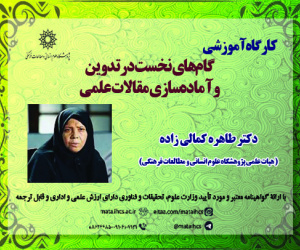تحلیل شاخص های پایداری فضای شهری در کلانشهر تهران با رویکرد عدالت فضایی (مقاله علمی وزارت علوم)
درجه علمی: نشریه علمی (وزارت علوم)
آرشیو
چکیده
مقدمه: از آنجایی که سیاست های تخصیص و توزیع منابع در شهرها، توسط برنامه ریزان و مدیران شهری صورت می گیرد، بنابراین مسئولان شهر های اسلامی، مجریان اصلی اجرای عدالت فضایی و سیاست های اجرایی رفاه اجتماعی در شهرها هستند. نابسامانی نظام توزیع مراکز امکانات و خدمات در فضاهای شهری زمینه ساز نابرابری اجتماعی شهروندان در برخورداری از این خدمات شده است. تحلیل نابرابری ها در سطح مناطق شهری، نقطه شروع خوبی برای شناخت وضعیت نامتوازن شهرها می باشد. هدف: هدف پژوهش حاضر تحلیل و سنجش میزان پایداری فضایی کیفیت محیط در مناطق 22 گانه کلانشهر تهران است. روش شناسی: پژوهش حاضر از نظر هدف کاربردی و از نظر روش توصیفی- تحلیلی و شیوه گردآوری داده ها اسنادی می باشد. همچنین از مدل های کمی و تصمیم گیری VIKOR، ضریب همبستگی، آنتروپی شانون و سیستم اطلاعات جغرافیایی Arc Gisاستفاده شده است. قلمرو جغرافیایی پژوهش: مناطق 22 گانه کلانشهر تهران است. یافته ها و بحث: یافته های پژوهش نشان می دهد شاخص های پایداری فضایی کیفیت محیط به صورت متوازن توزیع نشده و تفاوت چشمگیری بین مناطق کلانشهر تهران از نظر برخورداری از شاخص های پایداری ملاحظه می شود. نتایج مدل بیانگر این است که، منطقه 21 و منطقه 18 کلانشهر تهران با ضریب پایداری محیطی به ترتیب(118/0) و (177/0) در رتبه اول و دوم قرار گرفته اند. منطقه 10 کلانشهر تهران با ضریب(627/0 )در رتبه 20 قرار دارد، منطقه 8 کلانشهر تهران با ضریب(650/0) در مرتبه 21 و در نهایت منطقه 13 تهران با ضریب پایداری محیط(664/0) در مرتبه 22 قرار گرفته است. نتیجه گیری: با توجه به نتایج این پژوهش مدیران و برنامه ریزان کلانشهر تهران می توانند با تغییر سیاست و اصلاح بودجه بندی فضایی- مکانی، نابرابری های فضایی و ناپایداری محیطی را تقلیل دهند و در نتیجه محیط شهری پایدارتری را در ابعاد مختلف برای شهروندان کلانشهر تضمین کنند.Analysis of Urban Space Sustainability Indicators in Tehran Metropolitan Area with Spatial Justice Approach
The disruption of the distribution system of facilities and services in urban spaces has created the social inequality of citizens in accessing these services. Analyzing inequalities at the level of urban areas is a good starting point for understanding the unbalanced status of cities. The purpose of this study was to analyze and measure the spatial stability of environmental quality in 22 metropolitan areas of Tehran. The purpose of this study is applied and in terms of descriptive-analytical method and method of data collection is documentary. Quantitative models and VIKOR decision making, correlation coefficient, Shannon entropy and Arc Gis geographic information system were also used. The findings show that spatial sustainability indices of environmental quality are not evenly distributed and there is a significant difference between Tehran metropolitan areas in terms of sustainability indices. The results of the model show that the 21st and 18th districts of Tehran metropolitan area with environmental sustainability coefficient (0.188) and (0.177) were ranked first and second respectively. Tehran metropolitan area 10 with coefficient (0.627) ranks 20, Tehran metropolitan area 8 with coefficient (0.650) is ranked 21st and finally Tehran 13th district with environmental sustainability coefficient (0.664) is ranked 22nd. has taken. According to the results of this study, managers and planners of Tehran metropolis can reduce spatial inequalities and environmental instability by changing spatial budgeting policy and reforming and thus make the urban environment more sustainable for different citizens. Metropolis guarantee.









